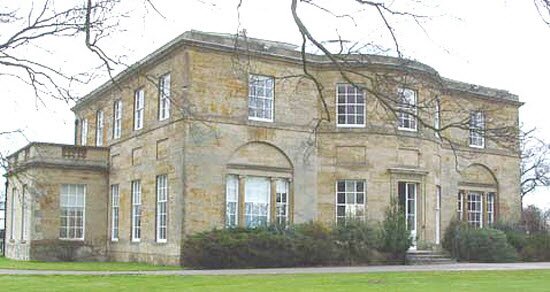Hi: 14° Lo:3°



Coton House is to be the centrepiece of a new village estate in the 11-acre ground of the former stately home (s)
SIXTY houses are to be built in the grounds of Coton House which itself will also be extended and converted into four homes.
Outline proposals were due to be approved on Wednesday when they went before council planners.
They were drawn up after the Post Office put the former stately home and its 11-acres of grounds up for sale in 2012. It had been the home of its management training centre since 1970.
Documents set to go before councillors set out proposals for the extension of the 18th Century Coton House - currently structurally supported by scaffolding and shrouded in protective cover - to form four homes with a new garage block.
The old stable buildings will be converted into eight homes, the old dairy would become one and three further outbuildings also transformed into houses.
Several buildings on the site considered redundant will be demolished to make way for what is described as a new estate village of 60 houses. The developers say in total there will be 236 car parking spaces.
There is some objection to the plans, primarily from people living nearby over access. Those concerns are shared by Churchover Parish Council which described the development as unsustainable with facilities in the village virtually non-existent other than a church and a village hall.
The Georgian Group - which described the main house as the most important surviving classical villa by Samuel Wyatt - has called for its full reinstatement to one property with its original features restored.
But a report to councillors said: "While these views are noted the building had undergone extensive internal modifications in the 1970s where an element of the internal fabric had been lost.
"The site is now vacant and the existing listed buildings, particularly Coton House, will fall further into decay and the longevity of these keen historic assets will be jeopardised if a future use is not secured.
The report added no objection to the plans had been raised by English Heritage or the council's own conservation adviser.
The estate was thought to have originally been home to monastic institution before falling into private ownership with the existing Coton House being built around 1874.
It was acquired in the late 1940s by British Thomson-Houston and used as a hostel for apprentices before being bought by the Post Office in 1970, but it was severely damaged by fire in 2010 and two years later was sold to a property developer based in Solihull.
The Scout campsite is not affected by the proposals.
1 Scarlet fever continues to rise
2 Schoolboy jets stateside for cancer therapy
3 Builder gets 13 years for 200,000 drugs empire
4 Thousands turn out for Spring Fair homecoming
5 Air traffic control concern set to ground wind farm plan
YOUNG rugger players from a town grammar school
A BOOK launch marked the beginning of a
CAMPAIGNERS face opposition in their bid to save
THE proposed expansion of the Clock Towers shopping
COVENTRY could become a model for other authorities to follow ...
A KNOWLE firm has been fined after a worker suffered ...
A PRIMARY school in Leamington will not be pressing charges ...
TRIBUTE has been paid to the motorcyclist who died following ...